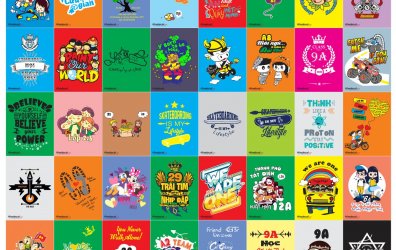V
vikram kumar
So, I’ve been running life insurance advertisements for a while now, and honestly—it’s been a mix of small wins and a ton of trial and error. Every time I think I’ve cracked the code, the next campaign eats through the budget like wildfire. I started wondering if I was the only one constantly tweaking targeting, copy, and bidding strategies, trying to make the numbers make sense. Turns out, scaling life insurance ads isn’t as straightforward as just “increase the budget.”
At first, I was doing what most people do—testing a few audiences, setting daily limits, and letting the platform “optimize.” But the results were inconsistent. Some weeks, leads rolled in at a decent cost, and others, I’d get nothing but clicks that went nowhere. I kept asking myself, “Am I just wasting money, or is there a smarter way to scale?”
Where I Messed Up First
One of my early mistakes was assuming that what worked for a small spend would automatically work when I scaled up. Spoiler: it doesn’t. When I doubled my ad spend on one campaign that seemed solid, the cost per lead jumped by almost 60%. It felt like I was paying more for the same audience, just faster. I realized scaling isn’t about throwing more money—it’s about understanding when your audience starts to fatigue.
Another thing I learned the hard way was not tracking where my best leads came from. I used to lump everything under one broad campaign—search, display, social. The data was too messy to actually tell me what was working. When I started splitting campaigns based on intent (like people actively searching for insurance vs. people just browsing finance content), it got easier to see patterns.
Things That Actually Helped
After burning a bit of budget, I started doing a few things differently.
First, I slowed down. Instead of scaling fast, I began increasing budgets in smaller chunks—10–15% every few days. That way, the algorithms had time to adapt without panicking.
Second, I played around with ad creatives more strategically. I used to change everything at once—copy, image, headline—which made it impossible to know what worked. Now, I test one element at a time. Sometimes it’s just swapping the headline to something more relatable like “Protect Your Family’s Future” instead of jargon-heavy stuff.
Another small but surprisingly powerful change: I added a “real people” element in the ads. Stock photos don’t always connect, but genuine imagery or even simple graphics with an emotional tone tend to draw better clicks. Especially in life insurance advertisements, people respond more to authenticity than hard selling.
Budgeting Tricks That Saved Me
A friend who works in PPC once told me: “If your ad set isn’t converting at $10/day, it won’t suddenly convert at $100/day.” That advice stuck with me. I now treat low-spend campaigns as “proof-of-concept” tests before scaling. Once I find one that delivers consistent cost per lead for at least a week, only then do I gradually increase spend.
Also, I learned to stop chasing every new ad trend. It’s tempting to try every new targeting feature or platform, but spreading yourself too thin makes optimization impossible. I focus on two or three platforms that consistently perform (for me, that’s search and display).
I also started using frequency caps. There’s no point in showing the same ad ten times to the same person—it wastes impressions and tanks performance. Capping impressions actually helped stretch my budget further.
The Human Element in Life Insurance Ads
One underrated thing I noticed? The emotional tone of the message matters more than I thought. When I leaned into storytelling instead of stats, the engagement improved. For instance, saying “Make sure your family’s dreams stay safe even if you’re not around” hit way harder than “Get a life insurance policy today.” It’s subtle, but it changes how people perceive your intent—less salesy, more empathetic.
Also, retargeting is pure gold here. People rarely sign up for life insurance the first time they see an ad. I started setting up sequences—soft reminders, helpful info, even short explainers. Over time, those touchpoints started converting way better than cold traffic ever did.
The Best Advice I Found (and Used)
I came across an article that broke down some solid ways to scale life insurance ads while keeping your budget under control. It explained how to pace campaigns, tweak creatives, and understand performance metrics better. It really aligned with what I was learning the hard way, but in a more structured way. If you’re also struggling to make your life insurance advertisements scale efficiently, this might save you some frustration. Here’s the post I’m talking about: Pro Tips To Scale Life Insurance Ads Without Wasting Budget.
After following a few of those ideas—especially around pacing budgets and testing in cycles—I’ve noticed my CPL (cost per lead) is more stable. It’s not perfect, but I’m wasting less and getting more predictable returns.
Final Thought
I don’t think there’s a one-size-fits-all strategy for scaling life insurance ads. The key seems to be staying patient, analyzing data properly, and keeping your message human. I still tweak things constantly, but at least now it feels like I’m experimenting with purpose rather than guessing in the dark.
If anyone else here has cracked the code on scaling without blowing the budget, I’d genuinely love to hear your take. Maybe we can swap notes—because figuring this stuff out alone can be a real grind.
At first, I was doing what most people do—testing a few audiences, setting daily limits, and letting the platform “optimize.” But the results were inconsistent. Some weeks, leads rolled in at a decent cost, and others, I’d get nothing but clicks that went nowhere. I kept asking myself, “Am I just wasting money, or is there a smarter way to scale?”
Where I Messed Up First
One of my early mistakes was assuming that what worked for a small spend would automatically work when I scaled up. Spoiler: it doesn’t. When I doubled my ad spend on one campaign that seemed solid, the cost per lead jumped by almost 60%. It felt like I was paying more for the same audience, just faster. I realized scaling isn’t about throwing more money—it’s about understanding when your audience starts to fatigue.
Another thing I learned the hard way was not tracking where my best leads came from. I used to lump everything under one broad campaign—search, display, social. The data was too messy to actually tell me what was working. When I started splitting campaigns based on intent (like people actively searching for insurance vs. people just browsing finance content), it got easier to see patterns.
Things That Actually Helped
After burning a bit of budget, I started doing a few things differently.
First, I slowed down. Instead of scaling fast, I began increasing budgets in smaller chunks—10–15% every few days. That way, the algorithms had time to adapt without panicking.
Second, I played around with ad creatives more strategically. I used to change everything at once—copy, image, headline—which made it impossible to know what worked. Now, I test one element at a time. Sometimes it’s just swapping the headline to something more relatable like “Protect Your Family’s Future” instead of jargon-heavy stuff.
Another small but surprisingly powerful change: I added a “real people” element in the ads. Stock photos don’t always connect, but genuine imagery or even simple graphics with an emotional tone tend to draw better clicks. Especially in life insurance advertisements, people respond more to authenticity than hard selling.
Budgeting Tricks That Saved Me
A friend who works in PPC once told me: “If your ad set isn’t converting at $10/day, it won’t suddenly convert at $100/day.” That advice stuck with me. I now treat low-spend campaigns as “proof-of-concept” tests before scaling. Once I find one that delivers consistent cost per lead for at least a week, only then do I gradually increase spend.
Also, I learned to stop chasing every new ad trend. It’s tempting to try every new targeting feature or platform, but spreading yourself too thin makes optimization impossible. I focus on two or three platforms that consistently perform (for me, that’s search and display).
I also started using frequency caps. There’s no point in showing the same ad ten times to the same person—it wastes impressions and tanks performance. Capping impressions actually helped stretch my budget further.
The Human Element in Life Insurance Ads
One underrated thing I noticed? The emotional tone of the message matters more than I thought. When I leaned into storytelling instead of stats, the engagement improved. For instance, saying “Make sure your family’s dreams stay safe even if you’re not around” hit way harder than “Get a life insurance policy today.” It’s subtle, but it changes how people perceive your intent—less salesy, more empathetic.
Also, retargeting is pure gold here. People rarely sign up for life insurance the first time they see an ad. I started setting up sequences—soft reminders, helpful info, even short explainers. Over time, those touchpoints started converting way better than cold traffic ever did.
The Best Advice I Found (and Used)
I came across an article that broke down some solid ways to scale life insurance ads while keeping your budget under control. It explained how to pace campaigns, tweak creatives, and understand performance metrics better. It really aligned with what I was learning the hard way, but in a more structured way. If you’re also struggling to make your life insurance advertisements scale efficiently, this might save you some frustration. Here’s the post I’m talking about: Pro Tips To Scale Life Insurance Ads Without Wasting Budget.
After following a few of those ideas—especially around pacing budgets and testing in cycles—I’ve noticed my CPL (cost per lead) is more stable. It’s not perfect, but I’m wasting less and getting more predictable returns.
Final Thought
I don’t think there’s a one-size-fits-all strategy for scaling life insurance ads. The key seems to be staying patient, analyzing data properly, and keeping your message human. I still tweak things constantly, but at least now it feels like I’m experimenting with purpose rather than guessing in the dark.
If anyone else here has cracked the code on scaling without blowing the budget, I’d genuinely love to hear your take. Maybe we can swap notes—because figuring this stuff out alone can be a real grind.




